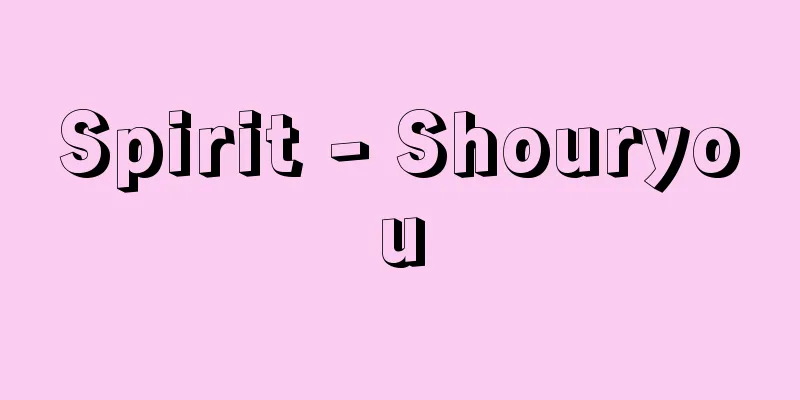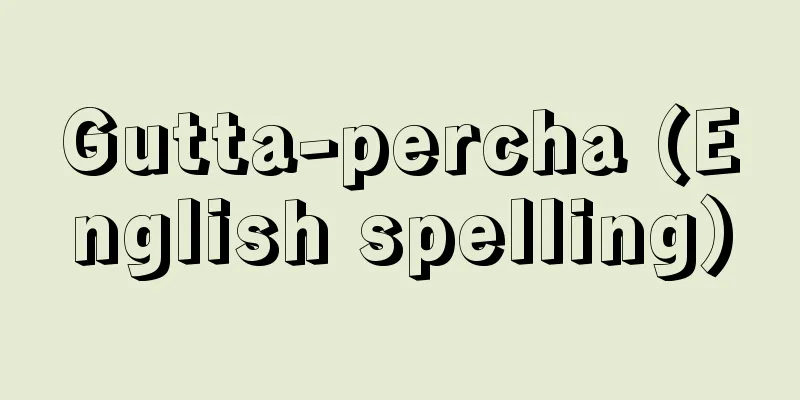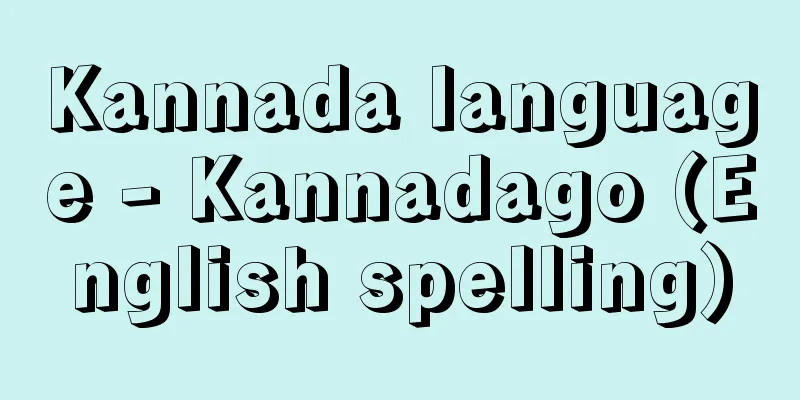Spirit - Shouryou

This refers to the ancestors who are welcomed and worshiped during the Bon Festival, and is also called Bon-sama or Senso-sama. It is believed that the spirits of those who died normally after a full natural lifespan separate from the body and become pure spirits (ancestral spirits) after 33 or 50 years of mourning, and visit their descendants to watch over them on New Year's Day, Bon Festival, and agricultural ceremonies. In some regions, the red dragonflies that fly around the Bon Festival are also called spirit dragonflies, and it is believed that ancestors return on these dragonflies, but generally, ancestors are welcomed by lighting a mukaebi (welcoming fire). At the earliest, around the 7th to 10th day of the Bon Festival, tall lanterns are erected and mukaebi (welcoming fires) are lit a little earlier in houses celebrating the first Bon Festival. It is also believed that the spirits return from the grave, so people often cut the grass on the road from the grave to the house, carry a ladder on their back to the grave, and welcome the ancestors home by pretending to carry them on their back. In some places, the spirits are welcomed from the mountains with bon flowers, while in other places a large bonfire is lit in the mountains to serve as a welcoming fire. Kanto lanterns and torches are also a form of welcoming fire. To welcome the spirits into homes in this way, a bon shelf is set up and various offerings are made, and the memorial tablets are taken out of the Buddhist altar and lined up for worship. In many regions, the spirits are sent off on the 15th or 16th. When welcoming the spirits, they are often received from the grave or in the mountains, but when sending them off, they are often sent off by floating them down a river or into the sea. In addition to lighting a farewell fire, the offerings made on the bon shelf are wrapped in lotus or taro leaves and placed on the riverside or on the shore. In many regions, a boat for the spirits is also made from straw or boards, loaded with offerings, lamps, incense, etc., and floated out to sea. (→Bon Festivals) Spirit |
盆に迎え祀る祖霊をいい,盆様,先祖様などの名もある。天寿をまっとうして普通に死んだ者の霊は,死後 33年なり 50年なりの弔い上げを終ると,死体から分離して清らかな霊質 (祖霊) となり,正月,盆や農耕儀式のおりおりに,子孫のもとを訪れて見守ってくれるものと考えられた。盆の頃に飛ぶ赤とんぼを精霊とんぼともいって,先祖様がこのとんぼに乗って帰ってくるという地方もあるが,一般には迎え火を焚いて迎える形が多い。早いところで盆月の7日から 10日前後,新盆の家では少し早くから,高灯籠を立てたり迎え火を焚いたりする。また,精霊は墓から帰ってくると考え,墓から家までの道の草を刈り,背負いばしごを背にして墓へ行き,先祖様を背に負うしぐさをして,家まで迎える形をとることも多い。盆花とともに山から迎えるところもあり,山で大火を焚いて迎え火にするところもある。竿灯や投げ松明 (たいまつ) なども,迎え火の一つの形である。こうして家々に迎えた精霊には,盆棚を設けて種々の供物を上げ,仏壇から位牌を出し並べて祀る。精霊送りは 15日か 16日にする地方が多い。迎えるときは墓や山から迎える形が多いが,送るときは川や海に流し送るものが多い。このときも送り火を焚くほか,盆棚に供えた供物をはすの葉や里いもの葉に包んで,川ばたや海岸に置く。あるいは麦わらや板で精霊舟をつくり,供物,灯明,線香などを積込み,沖へ流す地方も少くない。 (→盆行事 )
精霊
|
<<: Pentecost - Seireikourinsai
>>: Holy Spirit - Seirei (English spelling)
Recommend
Awamorisou - Awamorisou
…The Japanese name comes from the fact that the s...
Free trade - jiyuboueki (English)
The abolition of state interference in trade tran...
Efate Island (English spelling)
An island in the southwest Pacific Ocean, in the c...
Yona
…Greeks active in northwestern India from the 2nd...
Chantilly - Chantilly (English spelling)
A residential and resort town in the Oise departm...
Wheezing
Concept and mechanism: Wheezing is a continuous so...
Ibuki thyme - Ibuki thyme
A small grass-like shrub of the Lamiaceae family ...
Armenian art - Armenian art (English spelling)
Art that flourished in the Armenian region. It is ...
Kamuikotan
This area is located in the west of Asahikawa Cit...
Rhododendron kisi - Rhododendron kisi
A semi-deciduous shrub of the Ericaceae family (A...
Mass communication
Mass media is a medium for mass-producing uniform ...
Phenylmercaptan
...A compound in which a mercapto group -SH is su...
Sattler, M.
...The leaders, K. Grebel and Felix Mantz (c. 148...
Sarunashi - Monkey
A deciduous vine of the Actinidiaceae family (APG...
Yenisei [river] - Yenisei
A large river in Siberia, Russia. It originates in...








![Mine [town] - Mine](/upload/images/67ccf4b9bb6a7.webp)
